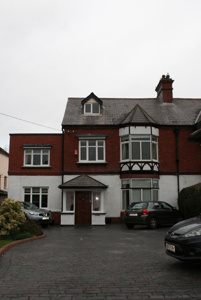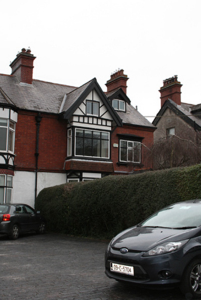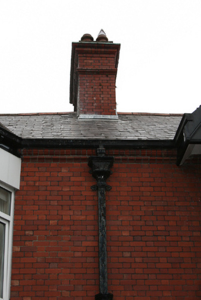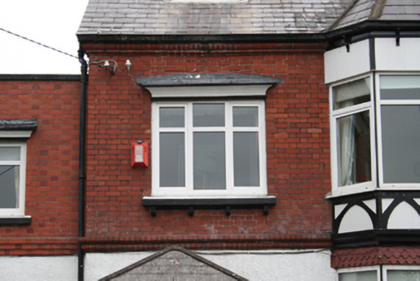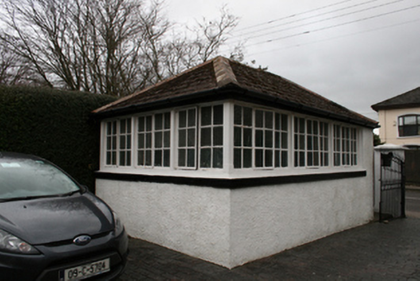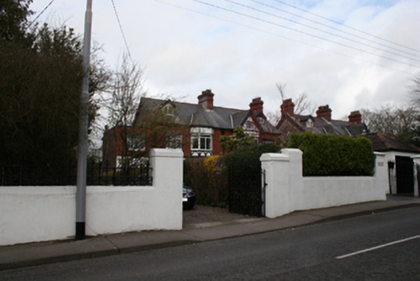Survey Data
Reg No
20868011
Rating
Regional
Categories of Special Interest
Architectural, Artistic
Original Use
House
In Use As
House
Date
1890 - 1910
Coordinates
170489, 71630
Date Recorded
08/03/2011
Date Updated
--/--/--
Description
Pair of semi-detached two-bay two-storey houses, built c.1900, with two-storey canted bay (west house), two-storey box-bay with jettied gabled dormer (east house), gabled dormer windows and single-storey entrance porches. Later single-bay two-storey flat-roofed extension to west house. Pitched slate roofs with clay ridge tiles, dressed red brick chimneystacks, timber bargeboards to dormers, timber brackets to eastern gabled dormer and cast-iron rainwater goods on corbelled red brick eaves course. Roughcast rendered walls to ground floor with dressed brick plinth and red brick laid in Flemish bond to first floor with red brick string course. Square-headed window openings with tripartite Tudor-style arrangements, limestone sills and corbels, rendered and slated canopies over first floor windows, terracotta shingles and rendered strapwork between ground and first floor of bay windows and to gabled dormer and uPVC windows throughout. Single-storey porches with hipped roofs and fixed glazing atop roughcast rendered plinth walls, square-headed door openings with replacement doors. Single-storey outbuilding to south of west house with roughcast rendered plinth and multi-paned timber casements forming upper section of building with hipped roof. Painted smooth rendered boundary walls surmounted by cast-iron railings, recent timber and galvanised gates.
Appraisal
These houses contain very fine red brick detailing and display some elements of the Arts and Crafts Movement in the reference to Tudor elements, seen in the canopied tripartite windows at first floor level, and the large hopper heads to the front elevation. The survival of the single-storey building to the front of one house is also of interest as an outbuilding from this period. The pair, along with the pairs to the east and west, were apparently built by a builder called Murphy.

